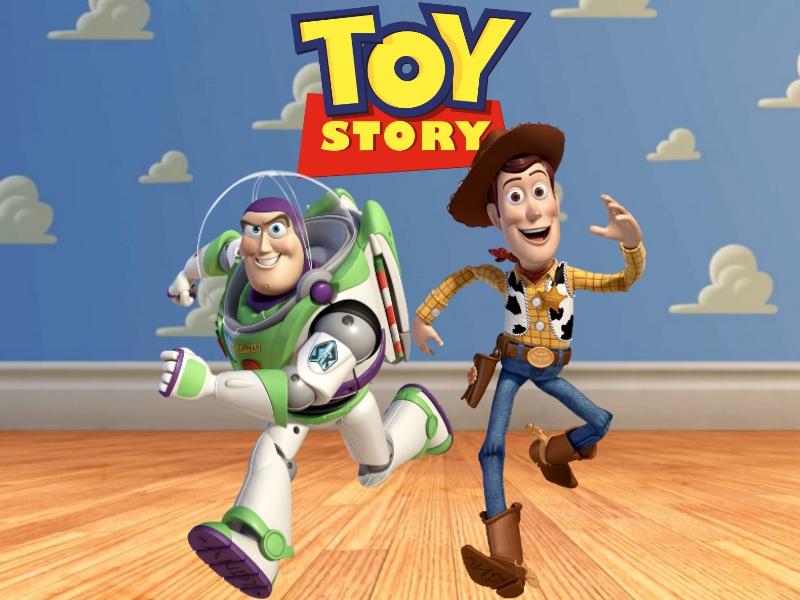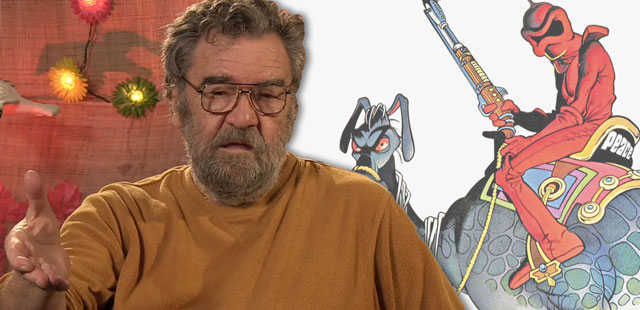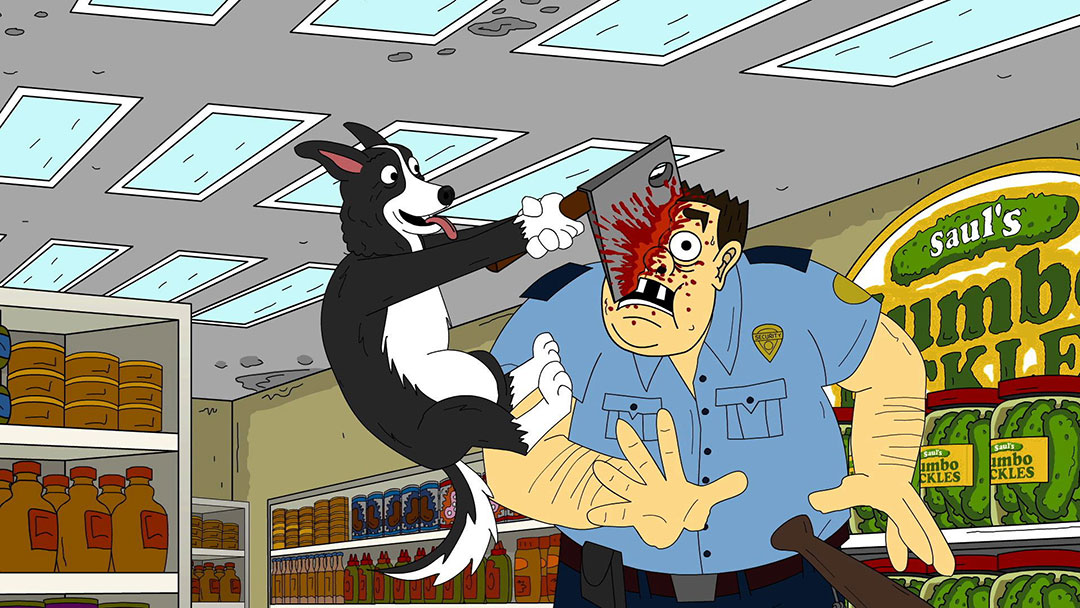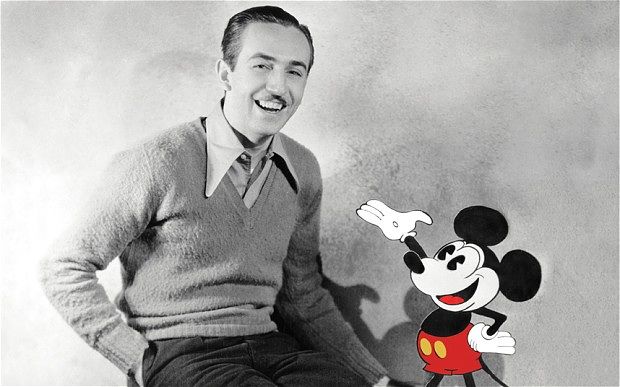The Double-Edged Stigma Faced By Western Animation
Animation as a medium has faced several hardships that are still prevalent today, which proves to be frustratingly ironic, as franchises like Looney Tunes were made with adults in mind, but were watered down to appease the kid-friendly crowd over the years. It has a difficult time being taken seriously and is often dismissed as an alternative for babysitting. For an extra layer of humiliation, it is often regarded as its own genre, even by apparent professionals like the American Film Institute, implying that it is unable to stand with the likes of literature, music, and its live-action counterparts as a legitimate medium and art form. Even the popularity of beloved characters brought to life by animation, such as Mickey Mouse, Bugs Bunny, or Homer Simpson, does not prevent the medium from stopping dead in its track towards grandeur when confronted with the judgemental attitude the public has towards it.
While toning down the content is understandable in some regards (such as getting rid of the racial caricatures from older Warner Brothers cartoons), animation being stereotyped as a free daycare enforces a tiresome cycle that leaves a very relevant part of our culture confused.
The ‘kids’ problem
The primary issue animation has to deal with is its reputation as a children’s entertainment machine. People with a decent reputation shoving a well-done animated work aside for a live-action contemporary just because of the medium used to convey the plot, can be quite a common occurrence. On the other hand, people are just as likely to forgive a work of animation for having glaring flaws for the same mundane reason. (“It’s for kids”) Hence, people fall victim to a thought process that is summarised by dismissing animated movies and shows, which are generally family friendly, as works that are strictly made for children. Thus, animation is indirectly labelled as an immature medium with no stories that adults can fall in love with.
While animation, especially the American variation, is prone to having a capitalistic side that releases merchandise with kids as its sole target audience (the Minions being probably the biggest offender), it does not automatically render most of the works that inspire these products as what some people like to call “kiddy-fodder”.

The Toy Story series (1995-present) is a prime example of animation being capable of captivating an older audience just as much as younger viewers. The franchise’s ability to explore themes such as the dangers of envy (Woody’s insecurities about being replaced slowly taking over his psyche in the first movie) and the effects of abandonment (Jessie, in the second movie, getting a panic attack at the thought of being stuck in storage like when her original owner gave her away) in a realistic and relatable way is part of the reason of its success with critics and the public. Despite this popularity, none of the films (except for the third one) have received a nomination for Best Picture, which is bizarre considering its critical lauding and the technical innovations brought upon by the first instalment, which are traits important to the industry.
However, it is no shocker. Being animated is essentially the mainstream award equivalent of having a handicap in a video game. As some reactions to Beauty and the Beast (1991)’s nomination for Best Picture show, a lot of people used to (and still) scoff at the idea of animation having any respectable artistic value, despite one of the most praised aspects of the 1991 film being the well-paced development of the titular characters and their relationship (AKA the writing). It is not just ‘artsy snobs’ that hold this pretense, the general public is also extremely guilty.
Hilariously enough, one of the best examples of how much animation is stigmatised as a medium is the Amazon reviews of the film Rango (2010), which has darker writing than most animated flicks despite its cast being composed of anthropomorphic animals. Indeed, several of the negative opinions come from parents that were upset at the movie being inappropriate for children, although the PG rating should’ve mildly implied it.
Another more blatant case of ignorance is the infamous Sausage Party (2016), whose advertising has several warnings that it is not a child-friendly movie whatsoever despite its colourful, Pixar-like art style. Yet, some people still decided to ignore the obvious sexual innuendo in the title and the glaring “R” rating, bring their kids to go see the film, and then complain about its raunchy content. Whether Sausage Party was a well-made film or not and whether the American rating system is a fair procedure or not, the “R” rating is a blunt sign of a work containing an element that might make adults too uncomfortable to show it to their kids. Therefore, people still voluntarily taking their offspring for a cheerful viewing of Sausage Party just demonstrates the absurdity contained in the reputation of animation and how much the public is affected by it.
The ‘adult’ problem

On the far end of the stigma spectrum is a response to the “animation is only for kids” comments. It got corrupted as quickly as it drove the more conservative audience members crazy. Primarily started by Ralph Bakshi’s films such as Coonskin (1975) and Fritz the Cat (1972) and popularized by shows like The Simpsons (1989-present), Batman: The Animated Series (1992-1995) and Beavis and Butt-head (1993-1997, 2011), is an anti-establishment ideology proclaiming that animated works are only appealing to adults if they are filled to the brim with black comedy, which consists of swearing, physical violence, vulgar humour, and blatantly sexual content.
South Park (1997-present) is the most popular perpetrator of those thoughts, with its writing consisting of everything that made Bakshi notorious, but tenfold. While its older brethren proved that adult animation could be successful, South Park’s politically incorrect humour normalised contemporary Western adult animation. Aiming to offend every group imaginable, the show’s goofy and snappy satire that contrasted its choppy and colourful animation has been frequently imitated, but never replicated. Despite its influence, South Park cannot work under a different name with a different crew. Adult animation is infamous for being full of crude provocateurs, and the worst of the works belonging to that group failed to develop an identity beyond embodying the aforementioned crudity. The success of South Park set an unrealistic and ridiculous standard, one where animation is only “adult” if it’s a comedy where the violence is bloody, the dialogue is raunchy, and the intimacy is filthy. Part of the beauty of having no age restrictions when writing a story is the ability to explore usually forbidden themes and more complex ideas in a way that adults can relate to. But to the corporates in the entertainment industry, it seems that only the most misanthropic of actions, instead of the truly thought-provoking, are endearing to the older crowd.

As a result of messy public reactions, animation is plagued by a stigma that cripples it whether the work is child-friendly or not, but for opposing reasons. Animated shows and films made with children in mind are dismissed by professionals and casual viewers alike for being supposedly overly optimistic, cutesy and one-dimensional, while adult animation is expected to be as inappropriate as possible by having content that is rather immature in hindsight. The medium is constantly being stabbed by a nasty double-edged sword that is slowly deteriorating, with shows like Adventure Time (2010-present) and Gravity Falls (2012-2016) proving that “kid’s” programs and films can be dark and relatable to grownups, while other works like Rick and Morty (2013-present) and Bojack Horseman (2014-present) showcase that adult animation can be more than a bland brand of cynical edge.
As one of the biggest names in the animation industry once said:
“You’re dead if you only aim for kids. Adults are only kids grown up, anyway.”-Walt Disney

What do you think? Leave a comment.











I dont watch much american animation shows, but I like anime and sadly the fanbase consists of younger people or even older people watching shows that are clearly made for the young demographic.
I mean there are things like Billy Bat, Maison Ikkoku, Tatami Galaxy, Punpun, Kino no Tabi etc. but the most popular things, that also have mainstream appeal, are things like Attack on Titan or Sword Art Online or Naruto. These are clearly made for the “teenage”/children demographic. I dont want to say that adults cant enjoy them (hell, I enjoy One Piece and enjoyed the first part of SAO), but I think the fanbase watches/reads the things, that are aimed at a younger demographic. And a lot of these shows dont appeal to the older demographic.
Anime generally has a narrative that western adults can’t relate to.
I wouldnt say adutls cant relate to. It just depends on the show. We still have things like Kaiba, Tatami Galaxy, One Outs, Mushishi, Ping Pong, Death Parade etc.
I would say that these are shows, that western adults could relate to, but even in the western anime-fanbase not many people watch it. They like to watch more “light” stuff. And so in my experience there was a demographic change at about 2003/2004, when more “children”/”teenager” could access the internet.
I can just talk from my experience in Germany, but in the 90s and early 00s, anime and manga didnt have a big stigma. Manga especially, since most of the stuff that was released here at that time was either Shounen or Seinen Stuff like Eden, Gunmn, Blame etc. Actually i knew a lot of western comic fans who liked to read such manga during that time. Then about 2003/2004 it changed, when things like DBZ, Conan, Yugioh slowly began to be broadcasted on german TV. At that time a lot of new fans got introduced to the medium and what was really popular before, got less and less popular and now Shounen and Ecchi manga got really popular besides Yaoi/Shounen-Ai.
It also was similar with anime here. In the 90s and early 00s, one channel broadcasted all the more “adult” themed anime like Patlabor, NGE (to a certain extent), Nadia, Blue Submarine No. 9 etc.
Then it also changed when the “anime boom” came.
And that changed the perception of anime/manga in the mainstream.
Just let them judge. They don’t know what they miss out on.
I would love animation to be more diverse in the US, but animation is very expensive to produce.
I like this article, however, I think its important to remember that while animation is a severely underrated medium of expression that animation is not for everyone. Sometimes people don’t understand or like a medium simply because it doesn’t match their style or taste which is unfortunate considering that people in America often tend to censor animation as being only for children. Good article overall has a lot of good points.
A lot of people will say animations are for kids unless it’s filled with adult content like family guy, South Park, archer, drawn together etc.
I don’t have any problem with it, I just think of all the great shows they’ll miss and laugh. If it makes them feel mature and superior, let them say it.
I rock an adventure time shirt and I don’t even give a beep. In fact I usually get lots of complements.
Is that really still a stigma held by the majority? I doubt it. I figured it died out with my generation, during the rise of anime and shows like Batman TAS almost pushing into PG-13 territory at times. I mean, by the time Spirited Away hit theaters here it just like everyone accepted animated feature films in the same way they did live action. Looking at the universal love of Pixar and even many purely-Disney films since, I’d say that’s the largely the case.
I was talking to my parents the other day, they wanted to watch Batman vs Superman. I told them they should watch the animated movie adaptation of The Dark Knight Returns before doing so. My mom shot back, “is it a cartoon? I don’t want to see it if it’s a cartoon. Those are for kids”
I thought it was a bit ironic. My dad wound up watching the animated movies without her, though.
I also couldn’t get her to watch a scanner darkly. “I don’t want to watch cartoons!” “This isn’t a cartoon, it’s rotoscoped. Those are real people, it’s basically a hand drawn image filter over film.” “Looks like a cartoon to me, must be for kids.”
The average American adult has never seen an animated drama, thriller, historical or scifi show, so it seems bizarre, wrong or silly to them. They can’t imagine animation being used for more serious works.
From an Asian country here. That stigma is far from non-existent lol. Don’t think that just because we’re on the same continent as Japan means there isn’t that stigma around animation lol.
Mainly because most of the shows that people know of are those catered towards a younger demographic. Seinen shows, adult shows aren’t usually as well known unless one actually digs into the anime medium.
In Singapore the only official anime channel is Animax, which unless you’re a hardcore anime fan you wouldn’t be subscribed to it. Other channels with animated content are like Disney Channel, Cartoon Network etc. And most of the shows screening on them are for kids and looks kiddy. Even on the official main local channels, when they show animated programme it’s for kids, like Doraemon and a ton of chinese kid animated series like that sheep, san mao etc.
Add in the kind of movies animation studios have been releasing now. People just see “cartoon characters”, “talking animals”, “fairy tales” etc, and then just immediately presume the show’s just for kids. Most don’t have the interest to look beyond that to realise that maybe it isn’t all just kids stuff.
The main reason I feel would really simply be exposure. The public just doesn’t know animation’s simply a medium to tell a story. They base it off existing preassumptions about the medium and then stereotypes it as such.
Its kind of the same stigma that comic books have.
I think that stigma is going away somewhat. A lot of the geekier animation fans like Adventure Time, Steven Universe, Gravity Falls, and all sorts of anime, and even less geeky viewers still watch stuff like Family Guy, South Park, Bob’s Burgers, and Rick and Morty.
I’m currently studying to get into television, and I’m hoping that by the time that I’m in the biz, more serious television animation has caught in the mainstream. Bojack Horseman is getting there, I suppose, but that’s just one show.
Shows like Rick and Morty and BoJack Horseman deal with pretty serious subject matter at times.
Is that still common sentiment with stuff like Bob’s Burgers, Archer, Venture Brothers, Rick and Morty, and South Park?
In addition to all the western cartoons made for kids, remember that, before the advent of online streaming that gave westerners access to all sorts of anime, most of the stuff that got dubbed for western audiences was stuff like Pokemon and DBZ.
I love animation, but I think people have a point in thinking it’s for kid if they only have a general familiarity with the genre. Besides tv show comedies like family guy, what animation isn’t aimed primarily at kids? As for Anime, I think that’s a whole separate can of worms.
Its not just for kids, there is plenty for adults, but the vast majority is aimed at kids.
Well a part of the stigma is that for the most part, animation is intended to be consumed by kids. (and obviously in some cases people of all ages) What I mean by this is that there is not that much animation that kids are not advised to watch. Now I know there still is animation not intended for children, but I am almost certain the ratio is heavily in favor of “kids and up.”
And obviously people generalize when they say all cartoons are only for children.
Archer certainly ain’t for kidz.
I am a big Walt Disney Fan!
Walt wanted to “create a family park where parents and children could have fun- together”. That was true about his films as well and he built an empire on that premise. He wanted to make sure his films were clean and family friendly, not like Warner Brothers and Looney Tunes at the time with all the sexual innuendos. Today the sexual innuendos are very evident and less family friendly.
When we were growing up, the Saturday morning cartoons were funny and far less political and sexual. Many families today have stopped watching the Saturday cartoons because of those issues. We now create animated films that segregates the family because we have many different categories like children, mature, and adult film. Before it was just reaching the child in all of us.
“I do not make films primarily for children. I make them for the child in all of us, whether we are six or sixty”, Walt Disney, and he kept it clean and fun for the family.
I too, have always been a fan of Disney. I actually find I’m more a fan as an adult because now, I understand the character development, plotlines, etc. that are beneath the surface. We need more people like Walt Disney in the world.
I don’t really feel that stigma around American TV animated comedies, but anime still has it.
I think the next big leap now is getting Hollywood to greenlight animated dramas.
I love the thought of an animated drama. The possibilities are endless.
It’s one of my biggest pet peeves that there are people out there that dismiss animation as being “kids stuff.”
Lovely article. In my opinion, Disney got it right–adults are only grown-up kids, so if you gear everything toward kids exclusively, you’re dead. However, as you point out, that doesn’t mean animation should be “as inappropriate as possible.” In fact, offerings like South Park and Sausage Party do nothing but sicken and irritate me.
I’d point to Pixar as the company that has come closest to consistently making animated films that are enjoyable for *all* audiences. I’ve watched some recent films, including Toy Story 3 and Finding Nemo, as an adult because they came out during my twenties. I didn’t consider them to have “adult content” in the traditional sense. But as I was watching I remember thinking, “I’m getting a lot out of this, and picking up on nuances that would go over kids’ heads. This is fun; I wish I had kids to watch this with so we could share our experiences together.” That, not a specific audience, is what western animation should ultimately strive for.
Great article; I certainly find that animation comes under unnecessary fire, especially for the artistic liberty that it already possesses. Animation is maturing since it has been developed, and from certain shows like “Big Mouth” having begun to explore taboo subjects, it’s a resourceful medium that is slowly beginning to become an accepted resource for original ideas, where often those unprepared foolish like to delve into.
Great article; I certainly find that animation comes under unnecessary fire, especially for the artistic liberty that it already possesses. Animation is maturing since it has been developed, and from certain shows like “Big Mouth” having begun to explore taboo subjects, it’s a resourceful medium that is slowly beginning to become an accepted resource for original ideas, where often those unprepared foolishly like to delve into.
Aren’t most Hollywood blockbusters animation movies? The CGI content in some of the Marvel franchise is so dominant that the lines between a ‘real’ movie and animation are blurred.
Great article and ending quote with Walt Disney!
@Peter Provos: I don’t know if *most* of the blockbusters are animated movies, but a fair number are, especially around this time of year. During the holidays, families are looking for something warm and nostalgic, but smart and entertaining, to watch. Well-done animation delivers plenty of both.
It’s so sad that so many outside people (those who do not watch much animation or those who do not care as much for it) have inherent assumptions like this. So those of us who do watch and care about animation, regardless of our age, it’s so beautiful to see shows that do deliberately create content for all audiences. Shows like Adventure Time and Steven Universe who deal with such deep concepts without more mature audiences having to conceptualise the show itself. These topics are deliberately woven in there. Listening to podcasts like The Steven Universe Podcast, interviews of production crews, and the like really reveal to us how much particular crews of particular shows care about what they produce. And as an audience it’s so beautiful to hear that from them.
Truly, the idea that animation is another word for ‘kids’ movies” is an idea that has been proven to not be of the case. I like how you brought up the television show South Park, as it was possibly the first animation that was close to normalizing adult animation in the public consciousness. Since so many easily associate animation with children’s programming, the creators and script writers for many adult cartoons rely on crudeness and violence to such an extent were it almost becomes a crutch. Instead of relying on deep and thought-provoking scenarios that could grab audiences of all ages, this crutch simply restates that “cartoons are for kids” when its purpose is to disprove the idea.
In South Park, there is a sense that the creators have something to say about an aspect in society, so they do so by mocking society. In Rick and Morty, the characters go through creative dimensions and discuss relationships. it isn’t just the crudeness that makes the humor work, its just that the humor works and so happens to be crude. The Walt Disney quote at the end of your article really sums everything up perfectly, and animation is more. So much talent, skill, and creativity goes into animation. Thanks for such an intriguing article.
Animation needs to go along with a good story. Toy Story, Beauty and the Beast, were good movies, enjoyable to watch. I know that over the years watching so many with my children, some were good and others not so, and it all depended on the quality of the story. How different is that from movies without animation where we determine what is good from what is bad?